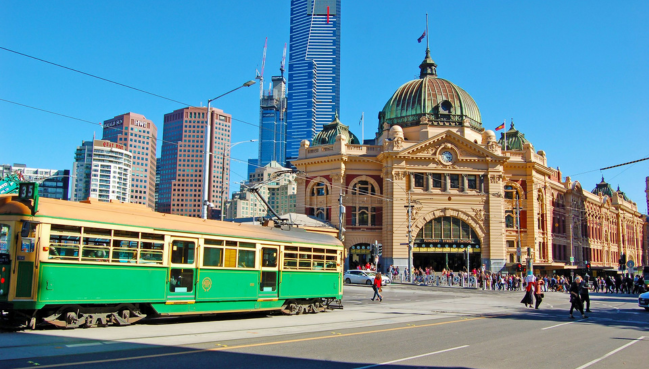Guide To Public Transport In Melbourne
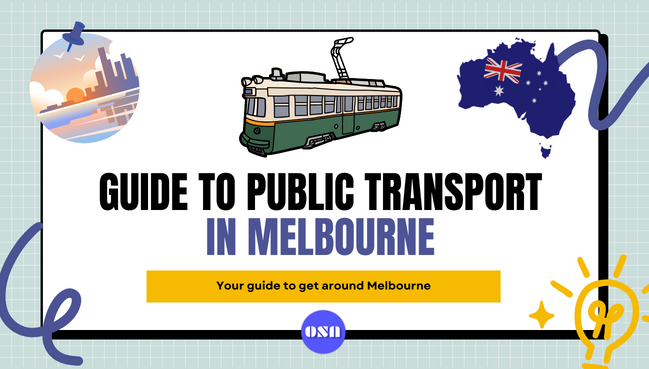
When it comes to navigating your way around the vibrant streets of Melbourne in Australia, public transport is undoubtedly your best friend.
This cosmopolitan city is known for its great transport network that offers a variety of options to help you get around comfortably and efficiently.
As a local resident, international student or a tourist exploring the city, understanding Melbourne’s public transport system is very essential.
In this article, we give you a guide to public transport in Melbourne, including different modes of public transport, the ticketing system, travel costs, student concessions and more.
Ready? Buckle up.
Mode of Public Transport
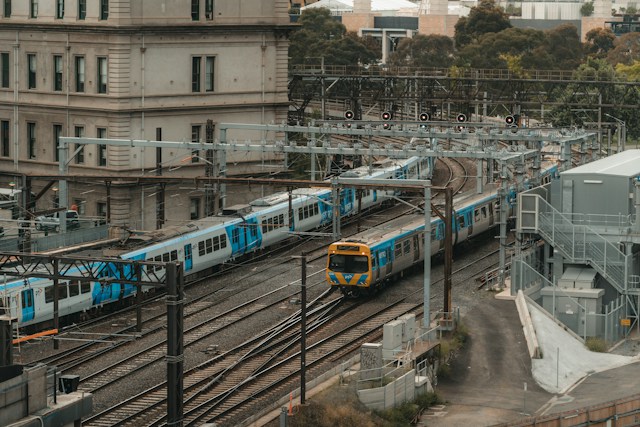
Melbourne’s public transport system has different travelling modes to help you get around including:
Trains:
Melbourne’s train network spans through the metropolitan area, connecting the Central Business District (commercial and economic heart of a city, concentrated with businesses, offices, financial institutions, and commercial activities) to the outer suburbs (residential areas located on the outskirts of the city).
The train system operates on a strict schedule, so you must familiarise yourself with the train timetables through the Public Transport Victoria (PTV) website or the smartphone app to plan your journeys and get information about any service disruptions or changes in schedules.
During peak hours, you can expect trains arriving every 5 to 10 minutes, while during off-peak you can expect them running every 20 to 30 minutes.
Trams:
Melbourne is known for its tram network, and it has the largest operational tram in the world.
Tram is a very convenient and environment-friendly mode of transportation popular among both residents and tourists.
Use of trams within the CBD (Central Business District) is completely free , and you don’t even need a myki card for travelling in that area.
Trams also offer seamless scenic travel, giving you a comfortable tour to explore Melbourne’s unique neighbourhoods.
Trams usually run every 10 minutes during peak hours and 20 minutes during off-peak peak.
Buses:
Buses in Melbourne provide transport to places or locations that are not directly accessible or covered by trams or trains.
While trams and trains are the primary modes of transport for many public transport users, buses help bridge the gaps, ensuring that even the most remote neighbourhoods are accessible and connected to the larger public transport network.
There are various types of buses, each with their specifications tailored to meet the requirements of the routes they cover. Some bus types are standard buses, articulated buses, low-floor buses etc.
Peak time buses usually arrive every 10 to 15 minutes, while 20 to 30 minutes during off-peak hours.
Ticketing System Used in Melbourne
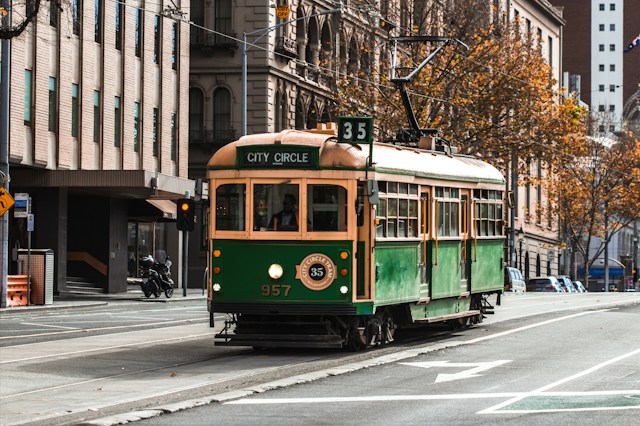
The Melbourne public transportation system operates on a unified ticketing system called the ‘myki’– a contactless smart card-based ticketing system.
It is often viewed that the word ‘myki’ is a play on the words ‘my key’ which signifies that the card is your pass to accessing various modes of public transportation in Melbourne.
This card lets you add money and pay for rides by tapping on and off the myki machine when you get on and off a tram, bus, or train.
Here are some rules regarding the touch on and touch of the myki card around Melbourne:
- Trains: You need to touch on the card before boarding the train and touch off on the exit.
- Trams: No touch on/off required in Free Tram Zone. Only touch on is required if you are travelling in Zone 1 and 2. Both touch on and touch off are required when travelling in Zone 2 only.
- Buses: Touch on your card when entering and touch off while existing.
The fare is automatically calculated based on the zones travelled, ticket type, and concessions. This makes it convenient and efficient to use.
The public transport in Melbourne is divided into 3 main zones:
- Free Tram Zone
- Zone 1
- Zone 2
You can purchase and top-up your myki card at several locations, including train stations, tram stops, retail outlets, convenience stores or even top-up with the Public Transport Victoria (PTV) app.
Cost of Travel in Melbourne
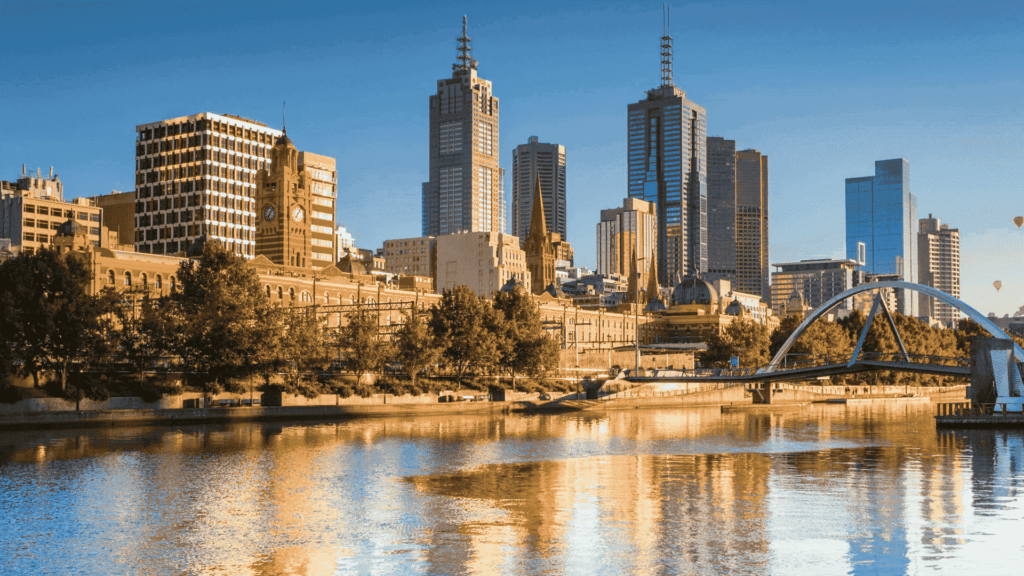
As mentioned earlier, the cost of your travel in Melbourne is dependent on certain factors like the number of zones you are travelling through, type of ticket or if you have access to concessions or not.
There are two ways to pay for your travel using the myki smartcard and the fares are calculated differently.
- Myki Money: Myki money is a pay-as-you-go method that allows you to load specific credit on your card and the fare for a journey is calculated based on the where you travelled. This is a good option if you don’t use public transport regularly, so you can just top up the credit you need and use it whenever you like.
- Myki Pass: This particular package is a prepaid option that offers unlimited travel within selected fare zones for a fixed duration. This is a great offer for commuters who regularly travel with public transport, like students and workers. This pass can be prepaid for 7 days, 28 days or 365 days depending on which suits your regular travel needs.
Both options can be managed through your myki card and you can easily switch as your travel needs change.
As per the Public Transport Victoria website, the fares for 2 hours start from $5.30 (concession $2.65) and $10.60 (concession $5.30) for daily fare. For up-to-date fares, we suggest checking the PTV website here.
Want to save money on Public Transport in Melbourne? Try Early Bird Train Travel. Travel on metropolitan trains and touch off before 7:00 AM (with 15 additional minutes buffer) on weekdays to enjoy free rides.
Concession for international students
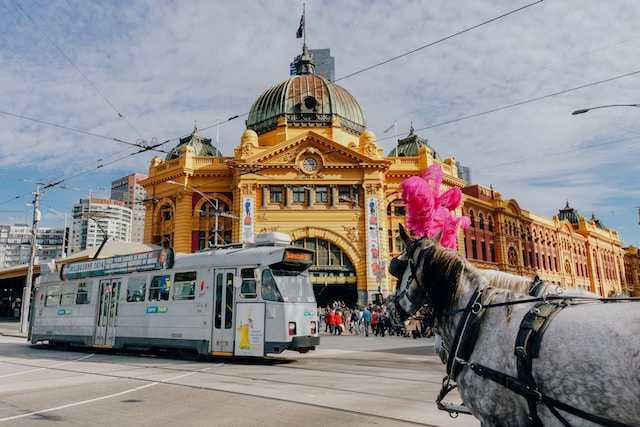
Eligible international students can save up to 50% on public transport with an International Student Travel Pass.
This travel pass comes in three options: 90-day, 180-day, and 365-day. They offer savings of $270, $540, and $975, respectively.
You can use this pass for all your travel needs whether school, work or just going out for leisure time.
Here are the eligibility requirements to participate in the International Student Travel Pass:
- A full-time international student
- Enrolled in a bachelor’s or associate degree, diploma or advanced diploma
- Studying at an educational institute that is signed up for the International Student Travel Pass program.
Note that mobile myki is not available for the International Student Travel Pass.
How does the Public Transport Concession Work for International Students?
According to the official website of Public Transport Victoria, here are the steps to follow to get started:
- Look into the International Student Travel Pass program to determine if your institution is a participant.
- If so, find out how to get an International Student Travel Passcode from your institution.
- Go to the website for the International Student Travel Pass after you have gotten your code from your institution.
- Purchase an international student travel pass, register your information and make an account.
- Submit your picture and current postal address.
- You will receive your international student travel pass in three weeks.
- With your international student travel pass collected, you can start travelling immediately.
Getting from the Airport to the City
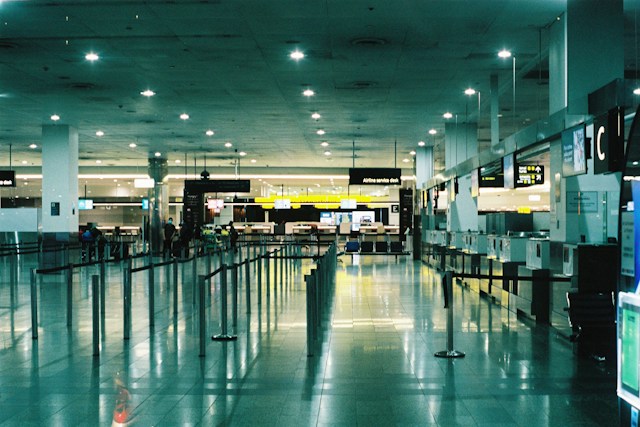
The closest airport to the city of Melbourne is the Tullamarine Airport also known as the Melbourne Airport, which handles most of Melbourne’s domestic and international flights.
There is no train or tram link from the airport to the city at the moment, but there is provision for bus transport. You can take a bus route number 901 from the airport to the nearest train station Broadmeadows. Other buses routes 478, 479 and 482 are also available. You can take these buses from Terminal 4.
Although the most popular bus service, SkyBus Express Bus Service runs a regular express service from Tullamarine Airport to the City Centre (and vice versa) every 10 minutes all through the day.
The SkyBus also operates at other airports like the Avalon Airport. At the airport, other buses operate from the airport to areas throughout the Victoria region. Once in the city center, you can easily find trams and trains to reach your final destination.
Other Transport Options
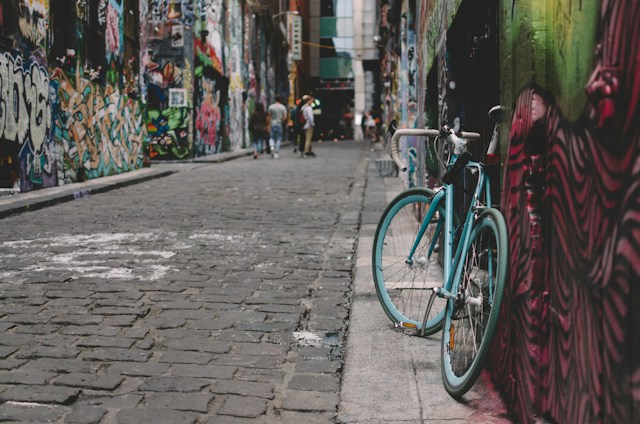
In addition to public transport in Melbourne, there are other options available, such as ride-sharing, biking, renting a car, and taking taxis.
Bicycles:
Cycling is very much encouraged in Melbourne as it’s a sustainable and healthy mode of transportation. The city has a good network of cycling paths that make it easy to get around. If you are interested, you can either do:
- Bike sharing: You can always rent a bike from the rental system with stations located around the city. This mode is great for short and quick trips. You can explore the city or reach your destination and then return it to any docking station.
- Personal bike: You can get your own bike if you would likely be going on short trips from time to time. There are also designated spaces around Melbourne where you can park your bike.
Ride-Sharing Services:
Car ride-sharing service companies like Uber, DiDi and Ola offer transportation services if you prefer convenient on-demand rides. Their services are usually accessible through apps that allow you to order and pay for the rides electronically.
Taxis:
There are also traditional taxis available in Melbourne. You can hail a mobile taxi on the street or book one in advance.
Car rentals:
In Melbourne, you can also access car rental services. This mode of transportation is best for trips outside the city or for day trips. The rental agencies are located at the Melbourne airport and throughout the city.
Other Useful Information
There are some necessary information you need to be aware of when travelling using the public transport system. This cuts across timetables and routes, accessibility, safety and technological updates amongst others which enhance your general travel experience.
- Timetables and Routes: You need to familiarise yourself with the timetables and routes of the public transport systems that you will be making use of. You can find this information on the Public Transport Victoria website or app. It will help you plan your trips and stay updated on any changes.
- Accessibility: Public transport in Melbourne has inclusive facilities for individuals with disabilities, making it easy for their mobility on Trams, Trains and Buses.
- Safety: Public transport in Melbourne is generally safe, but it is important that you stay alert and be conscious of your surroundings and with your personal items, especially at night.
- Apps: There are multiple smartphone apps like PTV, metroNotify, tramTRACKER, etc. available to travel on public transport. They also provide you with real-time information regarding the operations of particular transport modes.
Understanding how Melbourne’s public transportation system works is essential for a smooth city experience for students, tourists, and locals.
Hope this guide helped you understand the public transport in Melbourne.
Want to know more about Melbourne? We have a complete city guide. Check it out here.
